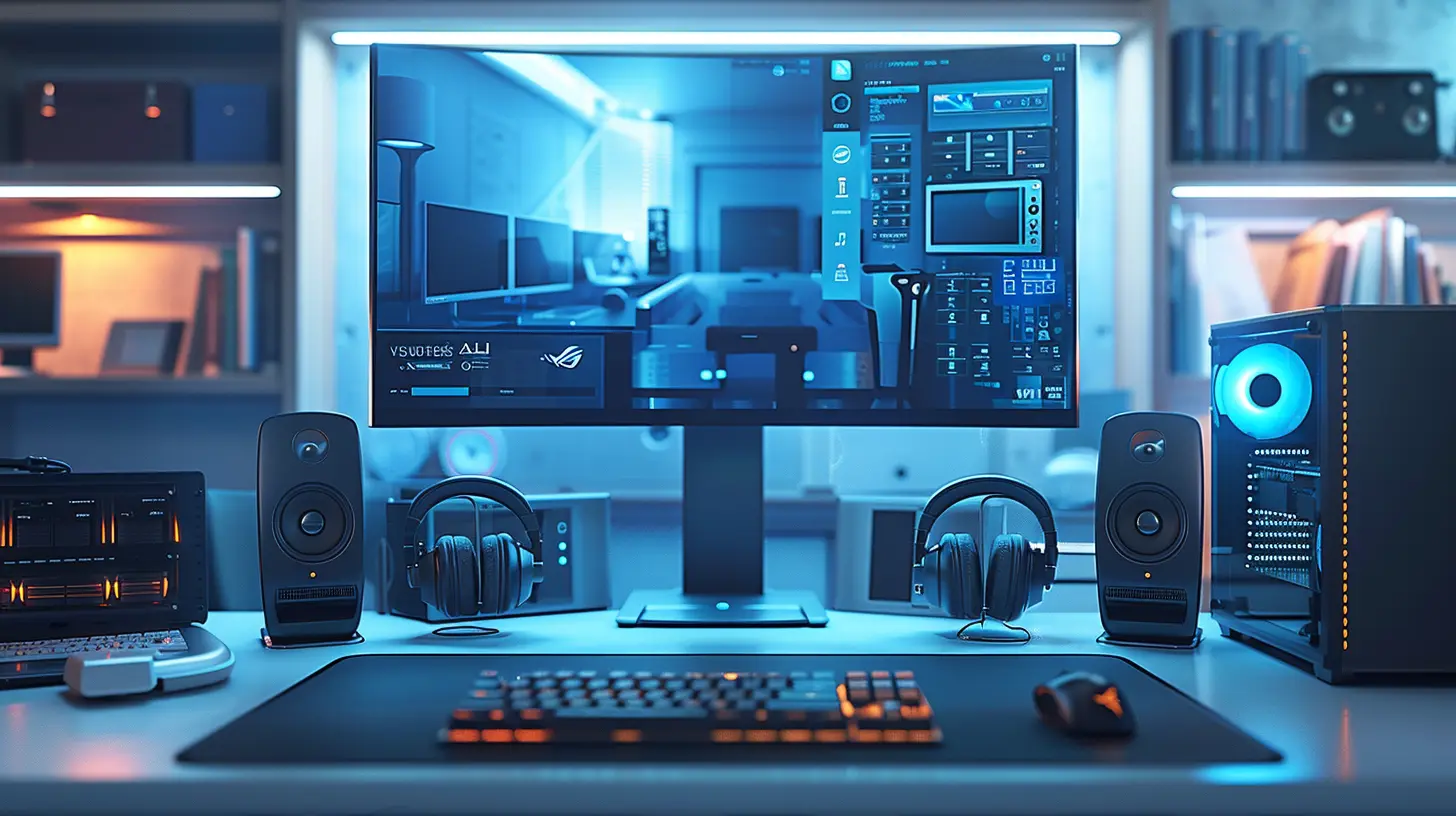Virtual Machines and Gaming: System Requirements Explained
19 September 2025
There’s no denying that gaming is a hobby that has skyrocketed in popularity over the years. From console gamers lounging on a couch to PC gamers meticulously tweaking every setting for maximum performance, gaming has become a universal pastime. But have you ever stopped to wonder about playing games in a virtual machine (VM)? Sounds interesting, right? Virtual machines aren’t exactly the first thing that come to mind when thinking about gaming, but believe it or not, they do have their place.
If you're scratching your head wondering how gaming and virtual machines go together, don't worry—you’re not alone. Let’s dive into the nitty-gritty of how virtual machines work, why you might want to use them for gaming, and most importantly, the system requirements to pull it all off.
What Is a Virtual Machine?
Before we dive headfirst into gaming, let’s quickly get everyone on the same page about what a virtual machine actually is. Picture this: a VM is basically a computer within your computer. It’s like inception—but for PCs. Using virtualization software like VMware or VirtualBox, you can create an isolated environment on your system that acts like a standalone computer. It has its own operating system (called a "guest OS"), storage, and allocated resources, all while running within your main operating system (called the "host OS").Think of a VM as a sandbox. It lets you experiment, run different operating systems, or even isolate risky software without messing up your main PC. But when it comes to gaming? Things get a bit tricky.
Why Use a Virtual Machine for Gaming?
You’re probably thinking, “Why would I even game on a VM? Doesn’t my PC work just fine already?” Well, sometimes it’s not about what’s convenient but rather about what’s possible or necessary. Here are a few reasons why someone might game on a virtual machine:1. Legacy Games: Do you have a soft spot for old-school games that don’t play nicely with modern operating systems? A VM can emulate older versions of Windows, making it easier to boot up those classics.
2. Experimentation: Maybe you want to tweak game files without risking your main setup. A VM is like a safety net—it gives you room to experiment.
3. Cross-Platform Gaming: Ever wanted to try a game exclusive to a different OS? For instance, a Mac user might set up a Windows VM to access titles not available on macOS.
4. Development and Testing: If you’re a game developer, running your game in a virtualized environment helps you test compatibility across different systems.
That said, gaming on a VM isn’t the most straightforward thing in the world. It comes with its own set of challenges—and oh boy, the system requirements can be quite unforgiving.
System Requirements for Gaming on a Virtual Machine
Let’s face it—gaming in a VM isn't as simple as firing up "The Sims" on your grandma’s laptop. Virtual machines are resource-hungry beasts, and gaming adds another layer of complexity. Here’s what you’ll need under the hood to ensure smooth performance:1. A Beefy CPU with Virtualization Support
Your CPU is the brains of the operation, and when it comes to virtual machines, it pulls double duty. Not only does it have to handle the host OS, but it also needs to run the guest OS and the game itself. To make this feasible, you’ll need a processor that supports hardware virtualization, like Intel’s VT-x or AMD’s AMD-V.- Ideal Specs: A modern multi-core CPU is non-negotiable. Think Intel Core i7/i9 or AMD Ryzen 7/9.
- Pro Tip: The more cores, the merrier! VMs thrive on multi-threading because they can split workloads across multiple cores.
2. Plentiful RAM (Random Access Memory)
RAM is like your PC’s short-term memory—it’s where all the action happens. In a VM setup, you’ll need to allocate memory for both the host and the guest OS. And remember, gaming eats up a hefty chunk of RAM on its own.- Ideal Specs: A bare minimum of 16GB is required, but 32GB or more is highly recommended if you want smooth gameplay on a VM.
- Allocation Tip: Always leave enough RAM for the host OS to avoid sluggish performance.
3. A Dedicated GPU (Graphics Processing Unit)
Here’s where things get interesting. Gaming is GPU-intensive, and your VM won’t magically assign your GPU resources unless you enable GPU passthrough. In layman’s terms, GPU passthrough allows you to “lend” your graphics card to the virtual machine, making it possible to play graphically demanding games.- Ideal Specs: A modern GPU, like NVIDIA GeForce RTX 30-series or AMD Radeon RX 6000-series. The more VRAM, the better.
- Caveat: Not all virtualization software supports seamless GPU passthrough. Some tinkering may be required.
4. Fast Storage (SSD Over HDD)
Storage speed is often overlooked but is just as critical. Let’s be honest—waiting 10 minutes for a game to load isn’t anyone’s idea of fun. An SSD can drastically reduce load times and improve overall performance.- Ideal Specs: At least 512GB SSD for the VM, with extra room for your host OS and other files.
- Pro Tip: NVMe SSDs are even faster than traditional SATA SSDs, so if you have the budget, go for it.
5. A Reliable Motherboard and Power Supply
This might sound mundane, but your motherboard needs to support virtualization features and GPU passthrough. Additionally, a high-quality power supply ensures your hardware isn’t overworked.- Tip: Check your motherboard’s BIOS settings and enable virtualization options.
6. Efficient Cooling
Running a VM and gaming simultaneously will make your system sweat. Without proper cooling, you’ll risk thermal throttling, which could tank your performance.- Solution: Invest in a good cooling system—be it air or liquid.
Challenges of Gaming on a Virtual Machine
Okay, so you’ve got the hardware requirements down. But it’s not all sunshine and rainbows. Gaming on a VM comes with its own set of hurdles:- Performance Overheads: Virtualization introduces an additional layer between your hardware and software, leading to potential performance dips compared to running games natively.
- Compatibility Issues: Some games and anti-cheat systems don’t play well with VMs. They might detect the VM environment and refuse to run.
- Setup Complexity: Configuring GPU passthrough, allocating resources, and tweaking virtualization settings can take time—and patience.
Tips for Gaming Success in a Virtual Machine
If you’re determined to make it work, here are some tips to ensure smooth gaming in a virtual machine:1. Optimize Resource Allocation: Don’t starve either the host or guest OS of resources. Strike a balance for optimal performance.
2. Update Drivers: Outdated drivers, especially GPU drivers, are a recipe for disaster.
3. Use Lightweight Guest OS: Stick to an OS that doesn’t hog resources—Windows 10, for example, works fine when optimized.
4. Fine-Tune VM Software: Whether you’re using VMware, VirtualBox, or QEMU, dive into the settings and use features like 3D acceleration for better performance.
5. Dedicated Hardware: If possible, use a secondary GPU solely for the VM to minimize conflicts with the host.
Is Gaming on a Virtual Machine Worth It?
Well, it depends. If you’re a mainstream gamer looking for plug-and-play convenience, a VM probably isn’t the best route. But if you’re a retro gamer, a curious tinkerer, or a developer, running games on a virtual machine can be an intriguing (albeit challenging) experience.The bottom line? Gaming on a VM isn’t about having the easiest or fastest setup—it’s about having flexibility, creativity, and options.
all images in this post were generated using AI tools
Category:
System RequirementsAuthor:

Lucy Ross
Discussion
rate this article
1 comments
Silas Hardy
Great article! Virtual machines can significantly impact gaming performance, making it crucial to understand system requirements. This guide clarifies the nuances between native and virtualized environments for optimal gaming experiences. Keep it up!
October 6, 2025 at 2:56 AM

Lucy Ross
Thank you for your positive feedback! I'm glad you found the article helpful in understanding the nuances of virtual machines and gaming performance.


